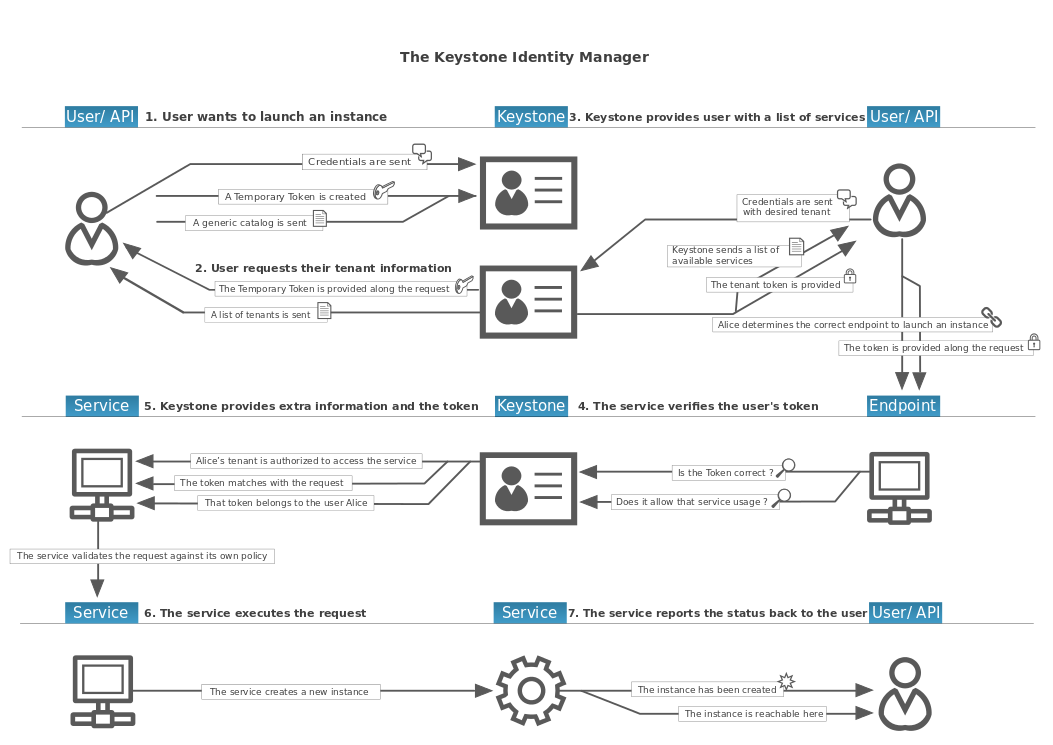1. Split chapter file content into section files per current Cloud Admin Guide 2. Added cross-references Change-Id: I51025b6eb4bb9b8912871837f9ce83d91dca973d Implements: blueprint reorganise-user-guides
3.3 KiB
OpenStack Identity
The OpenStack Identity service performs the following functions:
- Tracking users and their permissions.
- Providing a catalog of available services with their API endpoints.
When installing OpenStack Identity service, you must register each service in your OpenStack installation. Identity service can then track which OpenStack services are installed, and where they are located on the network.
To understand OpenStack Identity, you must understand the following concepts:
- User
-
Digital representation of a person, system, or service who uses OpenStack cloud services. The Identity service validates that incoming requests are made by the user who claims to be making the call. Users have a login and may be assigned tokens to access resources. Users can be directly assigned to a particular tenant and behave as if they are contained in that tenant.
- Credentials
-
Data that confirms the user's identity. For example: user name and password, user name and API key, or an authentication token provided by the Identity service.
- Authentication
-
The process of confirming the identity of a user. OpenStack Identity confirms an incoming request by validating a set of credentials supplied by the user.
These credentials are initially a user name and password, or a user name and API key. When user credentials are validated, OpenStack Identity issues an authentication token which the user provides in subsequent requests.
- Token
-
An alpha-numeric string of text used to access OpenStack APIs and resources. A token may be revoked at any time and is valid for a finite duration.
While OpenStack Identity supports token-based authentication in this release, the intention is to support additional protocols in the future. Its main purpose is to be an integration service, and not aspire to be a full-fledged identity store and management solution.
- Tenant
-
A container used to group or isolate resources. Tenants also group or isolate identity objects. Depending on the service operator, a tenant may map to a customer, account, organization, or project.
- Service
-
An OpenStack service, such as Compute (nova), Object Storage (swift), or Image service (glance). It provides one or more endpoints in which users can access resources and perform operations.
- Endpoint
-
A network-accessible address where you access a service, usually a URL address. If you are using an extension for templates, an endpoint template can be created, which represents the templates of all the consumable services that are available across the regions.
- Role
-
A personality with a defined set of user rights and privileges to perform a specific set of operations.
In the Identity service, a token that is issued to a user includes the list of roles. Services that are being called by that user determine how they interpret the set of roles a user has and to which operations or resources each role grants access.
- Keystone Client
-
A command line interface for the OpenStack Identity API. For example, users can run the
keystone service-createandkeystone endpoint-createcommands to register services in their OpenStack installations.
The following diagram shows the OpenStack Identity process flow:
